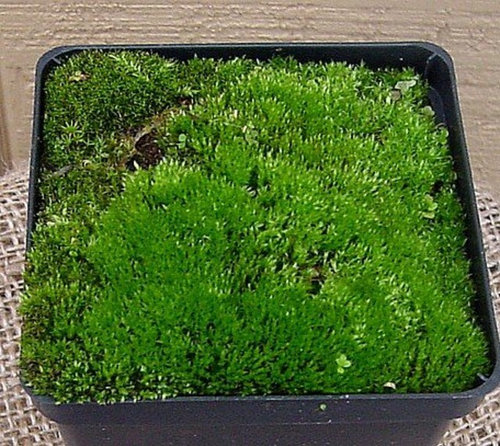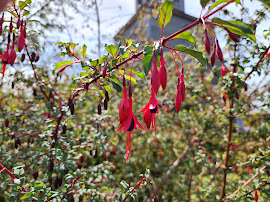A large part of the natural beauty of Beaufort and the rest of the South is the silver garland that hangs from our live oak trees. Spanish moss-draped oaks are the consummate of the Lowcountry and are there just about everywhere you turn.
An of beautiful Spanish moss hanging from majestic trees instantly reminds us of sultry summer days in the South. It’s a symbol of nature at its most relaxed.
Florida is known for its hot, humid climate and lush, green landscapes These conditions make it the perfect environment for various types of moss to thrive. Moss can be found growing on trees, rocks, and even lawns throughout the state For those interested in learning more about Florida’s moss species, here is an overview of some of the most common types found around the state.
Spanish Moss
One of the most iconic types of moss found in Florida is Spanish moss also known by its scientific name Tillandsia usneoides. This grayish-green moss grows in long wispy strands from the branches and trunks of trees. Spanish moss is an epiphyte, meaning it gets its moisture and nutrients from the air and debris around it rather than drawing resources from its host tree.
Spanish moss grows well in the warm, humid climate of Florida. Its dangling strands can provide nesting material for birds and homes for other small critters. While it rarely damages trees, an overload of Spanish moss can become heavy and break branches. Homeowners concerned about the amount of Spanish moss in their trees can gently remove and thin it out periodically.
Ball Moss
Another epiphytic species found in Florida is ball moss (Tillandsia recurvata). As its name suggests, ball moss grows in small, rounded clusters ranging from 3-6 inches in diameter. The fuzzy green balls attach to branches and other surfaces by fine, threadlike structures called filaments.
Ball moss draws moisture and nutrients from the air and debris around it. Like Spanish moss, it does not damage trees but can grow heavy and unattractive over time. Pruning and removing overgrowths of ball moss can help maintain an appealing landscape. These moss balls tend to thrive in the warm humidity of central and southern Florida.
Sheet Moss
Sheet moss refers to a few common species that grow in flattened, spreading mats along the ground, rocks, and tree trunks. These species are sometimes called carpet mosses. In Florida, common sheet mosses include Hypnum curvifolium, Hypnum imponens, and Thuidium delicatulum.
Sheet moss forms dense, cushy layers of vivid green. It thrives in shaded areas with high moisture and humidity. Too much sun exposure can dry sheet moss out, causing it to turn crispy and brown. Sheet moss enjoys the dappled sunlight and regular rainfall found under forest canopies and near wetlands. It can be an attractive addition to rock gardens, pavers, and shaded lawns.
Peat Moss
Sphagnum moss, also known as peat moss, can blanket bogs and swampy areas of Florida. This type of moss forms spongy mats that can hold over 20 times their weight in water! The water-retaining qualities of peat moss make it a popular soil amendment for improving moisture retention.
Peat moss provides food and habitat for some aquatic organisms but grows too densely to support much plant life. Over time, thick layers of peat moss build up from the gradual decomposition of generations of moss below. There are concerns that harvesting peat moss for commercial use may damage these sensitive wetland ecosystems in Florida and beyond.
Haircap Moss
This aptly named moss (Polytrichum commune) sprouts upright stalks topped with spore capsules that resemble tiny hair brushes or caps. It grows in soil, particularly in areas with high moisture and moderate sunlight. Haircap moss prefers acidic conditions and is common in bogs and pine forests.
In moist climates like Florida, haircap moss can thrive in lawns and become considered a weed. Its wiry shoots stand out against the blades of grass. While not harmful, extensive haircap moss growth can indicate compacted, overly wet soil. Improving drainage and light penetration may help restore dominance of lawn grasses.
Fern Moss
The delicate, lacy leaves of fern moss (Thuidium delicatulum) resemble tiny ferns. This species grows in feathery green mats across the ground, rocks, and tree trunks. In Florida, fern moss is common in moist woodlands and along streams. It covers shaded soil, logs, and rock outcrops with elegant texture and natural beauty.
Too much sunlight or foot traffic can damage fern moss. Small transplants can sometimes establish well in shady home landscapes. However, fern moss usually thrives best when left undisturbed in its native habitats. Flourishing stands indicate healthy local ecosystems with ample moisture and tree canopy cover.
Mood Moss
Mood moss (Dicranum scoparium) displays different shades of green depending on its moisture levels. After a rain, the leaves appear bright green. During dry spells, they fade to a subdued grayish-green hue. These color shifts led to its common name of mood moss.
In Florida, mood moss grows on tree trunks, rotting logs, disturbed soil, and rocky slopes. Tufts of wiry, upright stems give mood moss a bushy, tousled texture. Along with its color changes, this unique look makes mood moss stand out. Vibrant patches of mood moss signal suitable habitat conditions. Monitoring color helps gauge moisture levels through wet and dry seasons.
Cushion Moss
The plush appearance of cushion moss evokes its name. Dense clumps form soft, pillowy mounds in hues from brilliant green to yellowish-green. Two common cushion moss species in Florida are Leucobryum albidum and Leucobryum glaucum. Both thrive in moist forests and seepage slopes.
The compact cushion growth form helps cushion mosses retain moisture in steamy Florida summers. Longer leaves distinguish L. glaucum from the shorter leaves of L. albidum. Cushion mosses control erosion on slopes and provide cozy microhabitats for small invertebrates. Their moisture needs limit cushion mosses to humid, shaded environments in this region.
Moss diversity thrives across Florida’s ecosystems. From wispy Spanish moss in trees to plush carpets of sheet moss on the ground, a range of moss species can be discovered in moist, shady areas statewide. Observing the types of moss that grow in a habitat provides clues about the local climate, sunlight, and soil conditions. Whether hiking through woodlands or tending a backyard, Florida’s mosses provide beauty, texture, and insights into the environment.

Flowers and music?What could go better together? If you like classical music, check out my new blog: the Amadeus Principle
Spanish moss isn’t Spanish, and it’s not moss
Spanish moss is part of the bromeliad family which places it in the same plant family as pineapples and succulent house plants. Spanish moss is actually native to Mexico, Central America, South America, the United States and the Caribbean where it can grow in a tropical environment. Here in the U.S. Spanish moss grows from Texas to Virginia generally staying in the moister areas of the south.
Moss Identification and Basic Information for 9 Most Common Mosses
FAQ
What type of moss grows in Florida?
Spanish moss, ball moss, lichens and other epiphytes growing on living and dead trees are part of the image of the Florida landscape.
What is the moss hanging down in Florida trees?
Spanish Moss. Hanging off trees and landscape plants, Spanish moss is a familiar part of Florida’s environment. Despite its name, Spanish moss is not a moss but a bromeliad—a perennial herb in the pineapple family.
Is Spanish moss good for anything?
Other uses for Spanish moss include: Lids for cooking pots, emergency blankets, insulation, mixed with clay to strengthen plaster, fiber woven into floor …Dec 30, 2024
Is Spanish moss an invasive species in Florida?
Myth: Spanish moss is from Spain.
Fact: Spanish moss is actually a native plant to Florida. It is also native to the rest of the Southeastern states, as well as Central and South America. The Native American name for this plant translated to ‘tree beard’.

